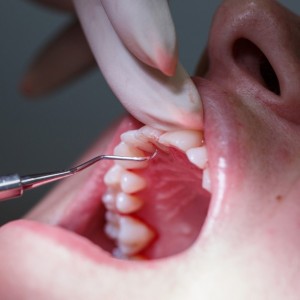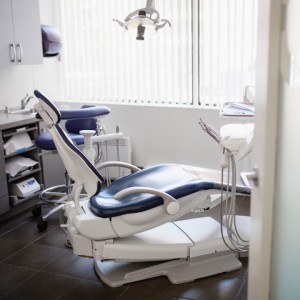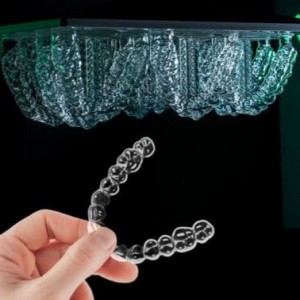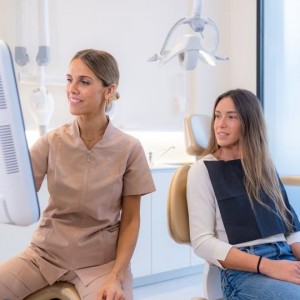
Assessment of thin bony structures using cone-beam computed tomography
Davide Elsido
Assessment of thin bony structures with cone-beam computed tomography (CBCT) has attracted great interest in various disciplines since its introduction in the late 1990s. In orthodontics, it is an essential part of studying the possible side effects of the marginal bone level due to treatment and retention. To achieve accurate results, the technique must be properly used.
The majority of studies investigating the validity and reliability of bone level measurements in relation to thin bony structures on CBCT images have focused on the inherent technical properties of the CBCT unit (e.g., voxel size), field of view (FOV) and the exposure parameters (e.g., milliampere [mA], and kilovolt [kV]). Other parameters, such as spatial resolution and partial volume averaging, may also play an important role in the visualization of small or thin structures.
Crucial to achieving high validity and reliability, however, is that the raw radiologic data are reconstructed in a way that optimizes visualization. Usually, this is done using multiplanar reconstruction (MPR), which produces three image planes orthogonal to each other (axial, sagittal, and coronal) to depict image volume. This enables the observer to choose the best view for the diagnostic task.
Another option is to use three-dimensional (3D) volume rendering, which, in comparison with MPR, presents the radiological data as a 3D surface object. Besides these two reconstruction techniques, the observer can vary the viewing mode for brightness, contrast and pixel value (MPR) and enhance or reduce the visualization of tissues with different densities.
To optimize the assessment of thin bony structures on CBCT images, a study in the Angle Orthodontist evaluated the validity and reliability of marginal bone level measurements made on CBCT images produced using two reconstruction techniques, two viewing modes and two resolutions. Researchers then compared them with the gold standard of histologic measurements.
Materials and methods
CBCT and histologic measurements of the buccal and lingual aspects of 16 anterior mandibular teeth from six human specimens were compared. Multiplanar and 3D reconstructions, standard and high resolutions, and gray scale and inverted gray scale viewing modes were assessed.
Results
Validity of radiologic and histologic comparisons were highest using the standard protocol, MPR and the inverted gray scale viewing mode and lowest using a high-resolution protocol and 3D-rendered images. Mean differences were significant (P, .05) at the lingual surfaces for both reconstructions, viewing modes (MPR windows), and resolutions.
Conclusions
When evaluating thin bony structures and marginal bone level in orthodontics:
- 3D rendering and MPR images with an inverted gray scale viewing mode do not improve the observer’s ability to visualize thin bony structures in the anterior mandibular region.
- The use of 3D-reconstructed CBCT images to assess thin bony structures should be avoided when thin cortical borders, such as in the anterior mandibular region, are suspected.
- The small difference between imaging protocols (standard and high-resolution) in visualization of thin bony structures does not justify the use of the higher radiation dose required using the high-resolution protocol: thus, no changes in current, clinically used protocols (standard resolution) are recommended at this time.
Camilla Lennholm; Anna Westerlund; Henrik Lund. "Assessment of thin bony structures using cone-beam computed tomography." Angle Orthod. (2023) 93 (3): 328–334. DOI: 10.2319/090922-633.1
 Related articles
Related articles
Fracture of shaping instruments within root canals is a common undesirable incident in endodontics. These fractures can prevent proper preparation, disinfection and obturation of the canal. They can...
Digital Dentistry 09 June 2023
Association between intracanal medicament radiopacity, streak artifact production using CBCT
This study aimed to calculate the correlation between the radiopacity levels of various intracanal medicaments and radiolucent streak formation using cone-beam computed tomography.
This meta-analysis sought to identify the in vivo prevalence and influencing factors of middle mesial canal in mandibular first and second molars based on cone-beam computed tomography scans.
Endodontics 28 March 2023
External cervical resorption: relationships between classification, treatment, and outcomes
The purpose of this study was to identify possible associations between classification, treatment, and one-year outcome of external cervical resorption (ECR) lesions using the Heithersay and Patel...
Endodontics 07 January 2022
The American Association of Endodontists classifies endodontic treatment of obliterated canals as a high level of difficulty. The individualization and shaping of the calcified root canal represent a...
 Read more
Read more
Periodontology 30 October 2025
To update the competences and learning outcomes and their evaluation, educational methods and education quality assurance for the training of contemporary specialists in periodontology
Editorials 30 October 2025
New research explores the prevalence of dental fear and memories underlying it, underscoring the need for accessible treatment.
Products 30 October 2025
LuxCreo, a global innovator in personalized medical and dental devices, announced that it has received a strategic investment from Angelalign Technology Inc., a leading.
News 30 October 2025
GTCR, a leading private equity firm, announced the simultaneous signing and closing of a strategic, structured minority investment in Solmetex (the “company”).
News 30 October 2025
PDS Health, a leading integrated healthcare support organization, has announced the launch of PDS Health Medical, a new business unit that connects medical care to dental practices through connected...















